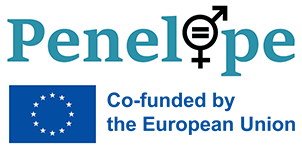Over the past year, we focused our work on the handbook following these objectives:
- To identify good practices among EU clusters and policy makers at regional, national and EU level related to gender equality and gender mainstreaming.
- To define a pan-European Gender Mainstreaming Approach through specific tools for SMEs.
We were positively surprised to see the echo in the European cluster community when asked to contribute with their experience and knowledge to our collection of good practices.
We succeeded to double the number of good practices identified (from targeted 15 to 28) and the number of interviews (from 10 to 20) carried out with representatives of companies, clusters, and cluster policy makers, with women networks.
All these contributions come from Austria, Bulgaria, France, Germany, Italy, Poland, Romania, Spain, Sweden, and Lithuania, as well as from European networks and associations and global institutions, making our handbook a first truly pan-European effort of its kind.
This input was analysed and combined with intensive research led to the design of 18 tools for a gender mainstreaming approach that were structured in eight areas of possible intervention:
- Workplace culture and institutional transformation.
- Talent recruitment.
- Career progression and access to training.
- Equal pay.
- Working conditions, health, and occupational safety.
- Maternity, work-life balance, and flexible working arrangements.
- Sexism and harassment in the workplace.
- Gender monitoring, performance, and reporting.
This toolkit, crafted to effectively address the needs of SMEs, aims to initiate the foundational steps in guiding clusters to develop methodologies and assist their member companies in aspects related to integrating a gender perspective.
The subsequent project activities will delve deeper into this goal, presenting a comprehensive methodology tailored for EU clusters. This methodology will empower clusters to conduct their own training sessions on gender mainstreaming for their associated companies, thus demonstrating with the appropriate tools and support from cluster industries, they can embrace gender policies and foster equal opportunities within their workforce.

